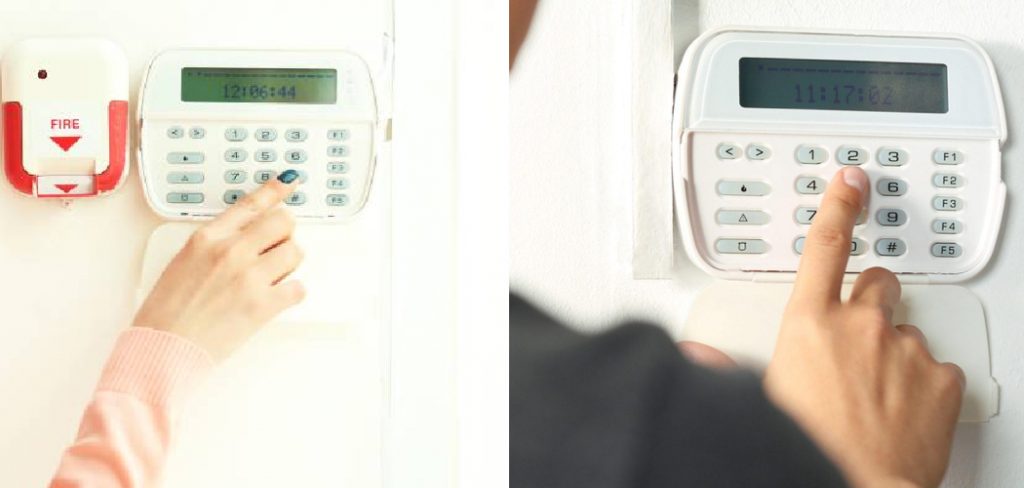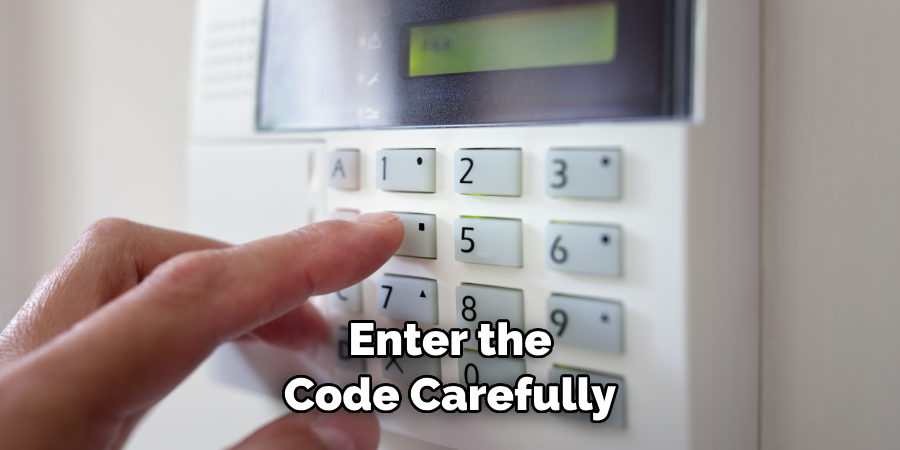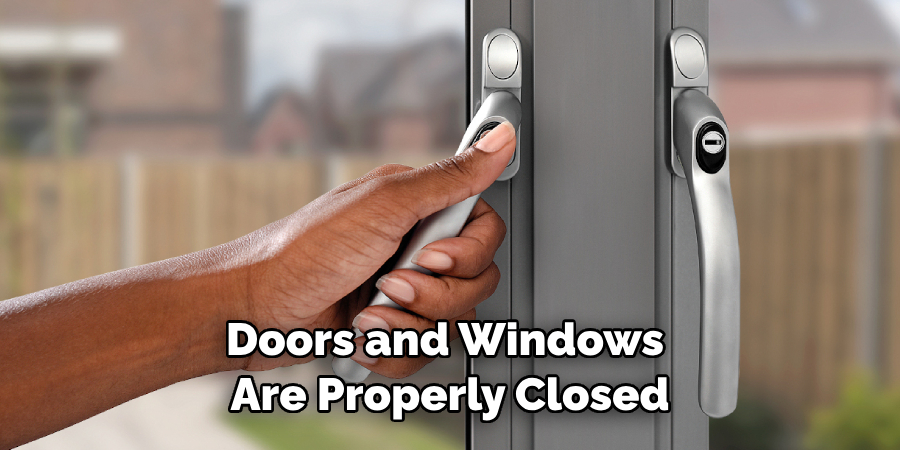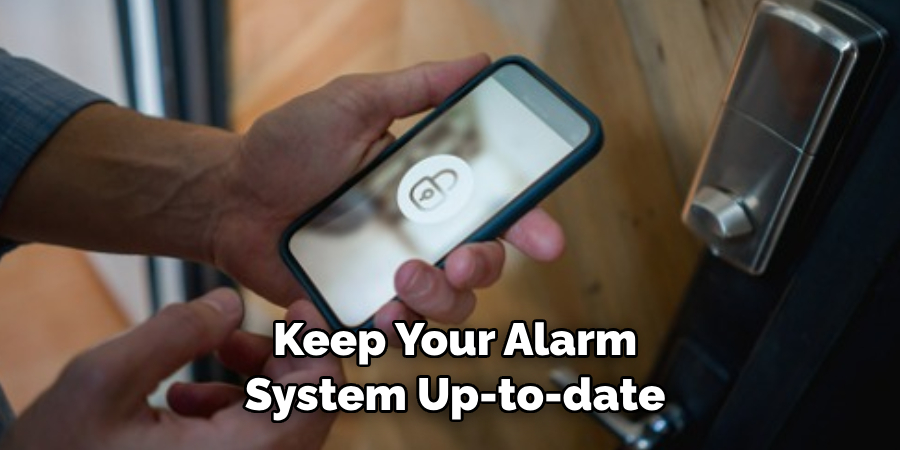Are you feeling frustrated or overwhelmed with your house alarm system? Have you ever wished there was a way to turn it off but need help figuring out how? If that’s the case, then this blog post is for you!

Here at Acme Alarm Systems, we are passionate about helping our customers protect their homes and providing them with the information they need to stay safe–and that includes knowing how to turn their home alarms off. The good news is that if you know what type of system you have and follow just a few easy steps, turning an alarm off can be fast and simple.
In this blog post, we’ll give step-by-step instructions on exactly how to turn house alarm off–giving users peace of mind when it comes time for those annoying false alarms!
What Will You Need?
Before you begin, it’s important to identify what type of alarm system you have. Your house alarm is most likely wireless or hardwired into your home’s electrical system. Once you know that information, then you’ll be able to follow the appropriate steps below.
Another thing to note is that you should have the alarm company’s contact information handy. This will be important in case of any emergencies that arise when turning your house alarm off or if you need additional assistance.
10 Easy Steps on How to Turn House Alarm Off
Step 1. Identify Your Alarm System Model:
Look for any identifying labels or documents from your alarm system to find its model. This is crucial as different models have varied methods of turning off. Contact your alarm company to learn more if you can’t find it.
Step 2. Locate Your Panel:
The control panel is the central hub of your alarm system, where you can manage all the settings. It’s usually placed in a convenient location like the hallway, near the front door, or in the master bedroom. Some panels may be touchscreen, while others might have physical buttons. Familiarize yourself with the panel and find the ‘Off’ or ‘Disable’ button.
Step 3. Enter Your Code:

Once you’ve located the ‘Off’ or ‘Disable’ button, the system typically asks you to enter a security code. This is the same code you use to activate and deactivate your system. Enter the code carefully. If you need to remember your code, contact the alarm company for assistance. Remember, repeated wrong attempts may trigger a false alarm or lock the system.
Step 4. Confirm the System is Off:
After entering the code, the alarm should stop sounding, and the status light on the panel should change (usually from red to green or no light at all). This indicates that the system is now off. In some systems, a voice confirmation or a message might appear on the display panel confirming the deactivation. Contact your alarm company for further guidance if the alarm continues to sound.

Step 5. Double Check All Sensors:
Once your alarm system is off, it’s a good idea to go around your home and double-check all the sensors. These will be located at various points in your home, such as doors or windows. Make sure they are not flashing or indicating that they are still active. If any sensor appears active even after the system is off, refer to your alarm system’s user manual or contact your alarm company for assistance.
Step 6. Reset Your System:
After ensuring all sensors are inactive, you should reset your alarm system. Resetting the system will clear any error messages and prepare it for its next use. The reset process can vary greatly depending on the model of your alarm system. It usually involves pressing a ‘Reset’ button on the control panel or holding down a combination of buttons. Refer to your alarm system’s user manual for specific instructions.
Step 7. Re-Activate Your System:

After resetting your system, you may want to reactivate it for future use. Return to the control panel and look for the ‘Arm’ or ‘Activate’ button. Before doing this, ensure all doors and windows are properly closed. Press the ‘Arm’ button and enter your security code. The status light should change to indicate the system is active (usually green to red), and you may hear a voice confirmation or see a message on the display panel.
Step 8. Test Your System:
Testing your alarm system after reactivation ensures that it is working properly. Open a door or window where a sensor is installed. The alarm should sound, indicating the system is working. Go back to the control panel and deactivate the system using your security code.
Step 9. Contact Your Alarm Company:
Should any issue arise during this process or if the alarm still doesn’t turn off, don’t hesitate to contact your alarm company. They can provide expert assistance and may even guide you through the process over the phone. They can send a technician to verify and repair your system if needed.
Step 10. Review Your User Manual:
Lastly, it’s always a good idea to regularly consult your alarm system’s user manual. It can provide valuable insights into your alarm system’s functionality, including how to turn it off, reset it, and reactivate it. If you’ve misplaced your manual, check the alarm company’s website or contact them for a digital copy.
By following the steps outlined above, you should have no problem turning your house alarm off. If you ever need additional help or want to upgrade your home security system, contact Alarm phone now, and our experts will be happy to assist!
5 Additional Tips and Tricks

- Make sure everyone in your household knows how to turn the alarm off. Knowing this information could help in emergencies or false alarms.
- Consider investing in a home security system that features an app. That way, you can control and monitor your system from anywhere with just a few clicks!
- It’s important to keep your alarm system up-to-date. Ensure you get the latest updates for your system to ensure it works properly and is not vulnerable to hacking or other online threats.
- When setting up your alarm system, try placing sensors in areas that don’t have much traffic or movement. This will reduce false alarms due to accidental movements like pets going around the house!
- Remember to change your security code periodically. A weak or easily guessable code could compromise the safety of your home, so make sure to use a strong and unique code.
By following these tips and tricks, you can ensure that your alarm system is working as it should and keep your home safe from intruders!
5 Things You Should Avoid
- Make sure to leave your security code written down anywhere. This could give intruders access to your system if they find it.
- Avoid placing sensors in areas where there is always movement, like near a fan or an air conditioning unit. This will help reduce false alarms due to accidental movements.
- Don’t forget to change the batteries for your alarm system. This will ensure the system is working properly and not vulnerable to any power outages.
- Don’t leave your system unmonitored for too long. If you’re going away for a while, make sure to have someone check on the house regularly or get an additional monitoring service from your alarm company.
- Never override your alarm system. Doing this could make it less effective and leave your home vulnerable to intruders.
By avoiding these tips, you can ensure that your alarm system is always working at its best and protecting your home from any potential threats!
Can You Turn a House Alarm Off Without the Code?
No, it is not recommended to turn a house alarm off without the code. The security code is designed to protect your home from intruders and should never be shared or given out to anyone. It’s also important to remember that most alarm systems will alert an external monitoring service if the wrong code is entered too many times. So, if you ever forget your security code, don’t hesitate to contact your alarm company for assistance.
By following the steps outlined above and avoiding the pitfalls mentioned, you should be able to turn your house alarm off with ease successfully! Keep these tips in mind, and stay safe!
Conclusion
In summary, arm and disarm your home alarm system with confidence, knowing that it will provide the high-end security you require. With today’s technology, it has never been easier to secure your home or business. Whether you use a professionally installed system that offers cellular backup for added protection or choose an easier DIY option, having a home alarm is essential to keeping safe and secure.
Now that you know how to turn house alarm off, make sure you take the necessary steps to fully utilize its effectiveness for all of your security needs! Taking these simple yet important precautions can help you protect what’s important and rest easy, knowing your home is safe from pesky intruders. Don’t forget—knowledge is power!
About
Safety Fic is a distinguished figure in the world of Diy design, with a decade of expertise creating innovative and sustainable Diy solutions. His professional focus lies in merging traditional craftsmanship with modern manufacturing techniques, fostering designs that are both practical and environmentally conscious. As the author of diy, Safety Fic delves into the art and science of Safety Fic-making, inspiring artisans and industry professionals alike.
Education RMIT University
(Melbourne, Australia) Associate Degree in Design (Safety Fic) Focus on sustainable design, industry-driven projects, and practical craftsmanship. Gained hands-on experience with traditional and digital manufacturing tools, such as CAD and CNC software.
Nottingham Trent University
(United Kingdom) Bachelor’s in diyfastly.com and Product Design (Honors) Specialized in product design with a focus on blending creativity with production techniques. Participated in industry projects, working with companies like John Lewis and Vitsoe to gain real-world insights.
Publications and Impact
In diy, Safety Fic his insights on indoor design processes, materials, and strategies for efficient production. His writing bridges the gap between artisan knowledge and modern industry needs, making it a must-read for both budding designers and seasoned professionals.
